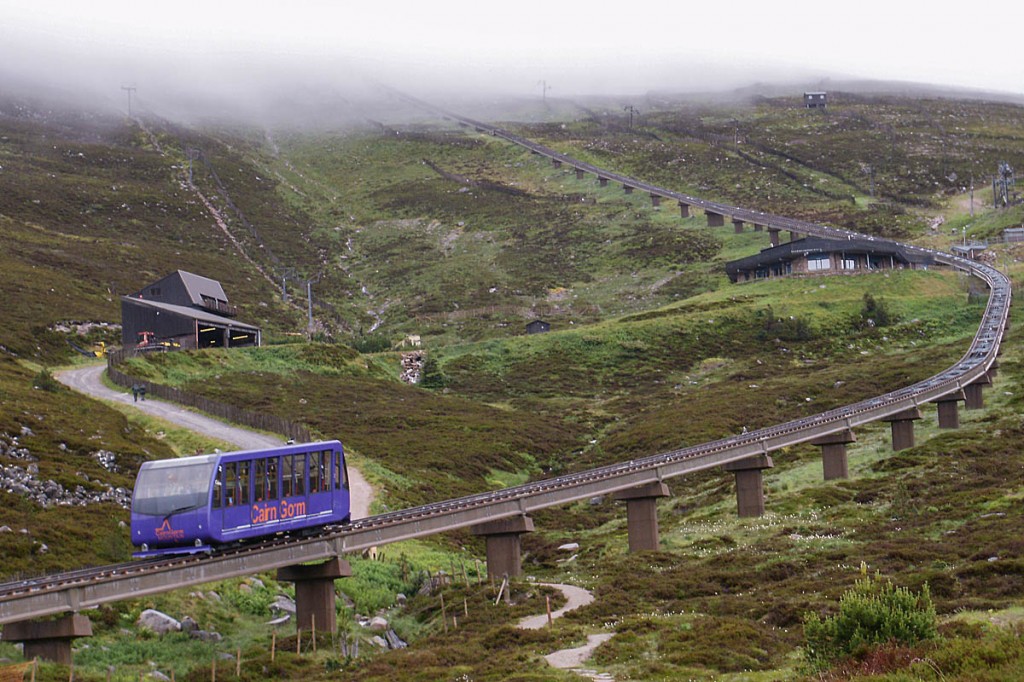Outdoor groups have called for more openness around decision-making on the future of the troubled ski centre on Cairn Gorm.
Four organisations said they are concerned public money could be wasted if proposals for the site go ahead.
They pointed out that the number of skiers using the ski area south-east of Aviemore have declined from an average of 78,000 a year in the years between 2004 and 2013 to 60,000 during the four years up to 2018. The Cairngorm Mountain resort now has only a third of the Scottish market share, compared to 41 per cent earlier in the century.
The funicular on the ski slopes has been closed since 2018 and the private company appointed by the site’s owner Highlands and Islands Enterprise went into administration.
The ski facilities are currently operated by a subsidiary company owned by HIE.
Four groups: Cairngorms Campaign, North East Mountain Trust, Ramblers Scotland and the Scottish Wild Land Group called for transparency from HIE before the Scottish Government makes a decision on funding the plans.
The organisations said they are very concerned about the lack of transparency and public accountability regarding decisions about the future of the ski centre. They said it is crucial any future plans should evaluate two scenarios, one with and one without the funicular railway to ensure full value for public funds which are being invested in the area.
Dave Windle of North East Mountain Trust, representing the group, said: “Skiers have been deserting the mountain since well before the closure of the funicular.
“It’s now clear that the funicular is not even needed to attract summer visitors given the number of tourists flocking to the area this summer when it wasn’t working. HIE’s plans must get things right this time or more public money will be wasted, and downhill skiers will continue to go elsewhere.”
The group is calling for a sustainable skiing operation to be created along with summer activities which are compatible with an environmentally sensitive high mountain environment.
The 1,245m (4,085ft) Cairn Gorm, the seventh highest mountain in the UK, has a fragile arctic and alpine mountain environment. As wells as being popular with skiers, it is an important destination for climbers and walkers, with its northern corries offering numerous winter climbing routes.
A spokesperson for the groups said: “From the moment the funicular ceased operation, the group believes that HIE decided that the funicular should be repaired and discarded other options. Of equal concern is the likelihood that a decision to repair will be made by the Government without any opportunity for parliamentary or public scrutiny of the financial details.”
Dave Windle said: “It will be totally unacceptable if the Government takes a decision before allowing MSPs and the public to consider the rationale for, and the costs of, the case presented by HIE.
“Of particular concern is the fact that future costs will not be limited to the £10-£15m estimate for the repair of the funicular but will need to include new ski uplift as well, probably a high speed chair lift, whether or not the funicular is repaired. In addition, there is a large backlog of maintenance of the infrastructure, including the Day Lodge and the Ptarmigan buildings.
“On top of that, all previous operators have lost money. Things need to be different this time, which is why HIE and the Government need to be open and transparent. Local skiing enthusiasts have better ideas on how to get skiers back to Cairngorm.
“The business case for supporting the repair of funicular must be made public now before a decision is taken. Only in this way can people and businesses on Speyside, skiers and those who are concerned about the mountain be assured that repair of the funicular is the best option and that public money wouldn’t be better spent on a different model or on supporting struggling businesses elsewhere on Speyside.”
The four organisations said rural economy minister Fergus Ewing has stated that a decision on the repair of the funicular is expected shortly, along with the business case.
“This suggests that there will be no period between publication of the business case and a decision by the Scottish Government,” the spokesperson said.
